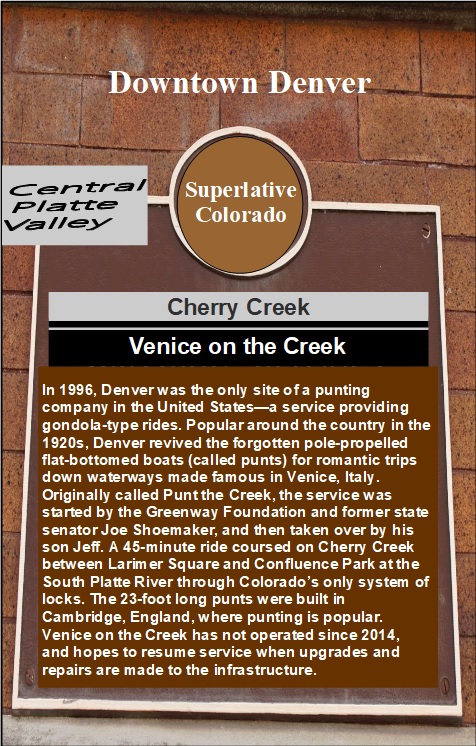© OpenStreetMap contributors
Larimer Square, “Denver’s most historic block,” has been the national model and prototype for the revival of downtowns and urban renewal. It all started after Dana Crawford and investors in 1965 stopped the block’s slated demolition, reversing the massive destruction of downtown buildings in the name of urban renewal. Larimer street was Denver’s early main street, but eventually became one of the country’s most infamous skid rows. The Larimer Square rebirth of restaurants and retail became the first project of a wave that made LoDo’s success what other cities have aspired to. The fruit of this effort is that the 26-block LoDo Historic District is the country’s largest concentration of Victorian and turn-of-the century buildings, a marvelous transformation of former brick warehouses and storefronts. Its current tenants include The Comedy Works, named by USA Today as one of the top five comedy clubs in the nation. In 1858 Denver’s first settlement by gold seekers, hailing from Georgia, was by Cherry Creek where present-day Speer Blvd. crosses Larimer, the camp being named Auraria. Shortly afterward General William H. Larimer, Jr. and his party from Kansas “jumped” a claim and set up stakes across the creek and named the town site Denver City, after the territorial governor of Kansas, James Denver.




